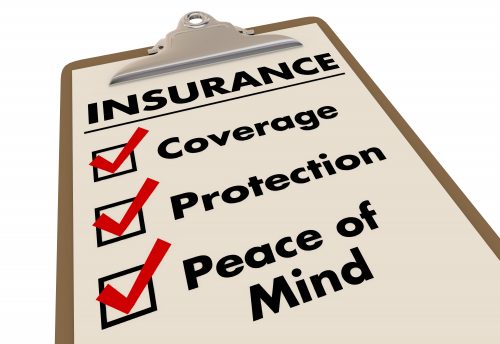Becoming an entrepreneur is a dream come true for many individuals, and Ecommerce, with its low barriers to entry has made it possible for them to realise their aspirations. It’s an extremely competitive environment and even with a lot of hard work, a fantastic product/ service idea and the best laid plans, it takes perseverance and a bit of luck to succeed!
There are varied hurdles along the path of every entrepreneur- be it a small merchant or an SME. Some challenges are external while others can be internal. But ultimately, how the business navigates through these obstacles determine their survival and growth.
One of the key areas that every business needs to monitor closely is its Finance and Expenses. While most businesses make plans and allocate funds for resources/ products, salaries, marketing costs etc they can sometimes be saddled with expenses that have not been anticipated or fully accounted for.

Whether you are starting off or a business that has been around for a while, large expenses- especially those that you had not anticipated and planned for, can be a cause of stress and disruptions. Apart from this, there are those expenses that are expected but are often overlooked during the planning stages as they may not appear immediate.
So take the time to know more about some such hidden costs that you did not see coming or might have overlooked while planning the business.
Unexpected Expenses that can show up
Shrinkage
One of the most common “unexpected expenses” that all ecommerce companies should be mindful of is Shrinkage which is defined as the loss of inventory/ product at some point between its purchase (by you) from the supplier and its purchase by your consumers.

There can be many reasons and possibilities of loss due to Shrinkage. It could range from the goods being damaged or due to theft during shipment or perhaps just packing errors that can lead to customers receiving more than they ordered. A common example would be clothes returned by the customer and you having to refund them, but the merchandise not being in a condition to be resold!
Whatever be the reason, the cost has to be borne by you, the merchant and it is smart to be aware and prepared for such unexpected expenses.

The best way to minimize unexpected costs arising from such loss due to Shrinkage would be to embrace technology. Consider investing in a real time inventory management system that uses barcodes and scanners to scan and track all your products as they make their way from the manufacturer to the customer. This gives you greater control over your products in transit and reduces the chances of goods being damaged and misplaced.
Maintenance / Replacement Costs
While setting up the business, it is not uncommon to overlook maintenance and replacement costs of the tools of the trade. This is a necessary expenditure that needs to be made periodically to keep up the productivity of the business and ensure operational efficiency.

This could be a simple computer/ printer for the freelance copywriter that needs to be replaced after some years of use or the upgrade of the sewing machinery used for making those cushion covers, placemats and runners that you have been designing and selling through your online store or even something more elaborate and sophisticated according to the business needs.

Apart from this, regular upgrades of your website’s navigational abilities by procuring customizable widgets or even cybersecurity enhancements to ensure the safety of the client has become a necessity to stay productive and competitive. Making allowances for such expenditures while planning your financials will ensure that you do not face unpleasant surprises at a later time.
Provision for Payments
One of the draws of ecommerce businesses is that it is able to avoid the substantial rental costs faced by brick and mortar outlets. But that does not exempt them from having to pay for many other Permits and Licenses to carry on their operations.

Merchants dealing with food supplies need to have their food handling license. Those providing services to customers – be it health related (like nutrition or exercise) or sector specific consultancy (like education, trade) would need to have their certifications / trade licences renewed and so on. But these are costs that are often overlooked.

Moreover, customers have come to expect free shipping and not being able to do so makes you less competitive. High shipping costs can come as a bit of a surprise for the business (especially in the early days) as making deals and building relationships with shipping agents take time. So it is best to be prepared by making reasonable provisions for delivery and shipping costs while budgeting.

Most payments for online transactions are made through credit cards or digital wallets. All this will usually entail some processing fees for each transaction. It might be a small percentage but surely adds up and must be planned for.
Even if it is a small business, certain professional fees like those of lawyers and accountants who help you run the business efficiently should not be overlooked.

Making provisions for Taxes to be paid to the government right from the start is also recommended rather than scramble to put the necessary funds together during tax payment time.
How to Manage the situation
Watch the Cash Flow

As a small merchant or SME, one needs to be on top of the business’ Cash Flow, i.e. the net amount of cash flowing in and out of your business at any point in time. It is a valuable metric to track as the timing of the inflow and outflow of funds are different. Manage the cash flow well and keep some buffer to allow you to take care of unexpected expenditures and emergencies.
Create an Emergency Fund

Create an emergency fund by setting aside some funds to help tide over unexpected expenses. While there is no fixed amount, most experts suggest that the business should have at least 3-6 months worth of expenses in an emergency fund.
Leverage Banks and Financial Institutions

Another way to handle the unexpected financial needs would be to approach banks for short term loans at favourable interest rates that will allow you to spread payments across a few months rather than having to come up with the entire amount at once.
Also try to secure deals with credit card companies and work out special payment plans that could help the business tide over an immediate cash crunch.
Get Insurance Coverage

Look at protecting the business and yourself against adverse situations by getting insurance coverage. The relevant options for ecommerce businesses are General Liability Insurance, Product Liability Insurance and Business Interruption Insurance.
While things are going well, Insurance feels like an unnecessary expenditure eating into the gains but when things go wrong, this can be the saviour.
Dealing with unexpected costs/ expenses is a part of every business’s challenges. While there is hardly a way to eliminate all such costs, awareness of such a possibility and prudent planning for unexpected expenditure is absolutely necessary to ensure the success of the business.
You might also like to check out the following blogs
https://blog.goshopmatic.com/how-to-manage-your-cashflow-successfully/
https://blog.goshopmatic.com/basic-bookkeeping-for-your-small-business/
https://blog.goshopmatic.com/enticing-customers-with-discounts/


